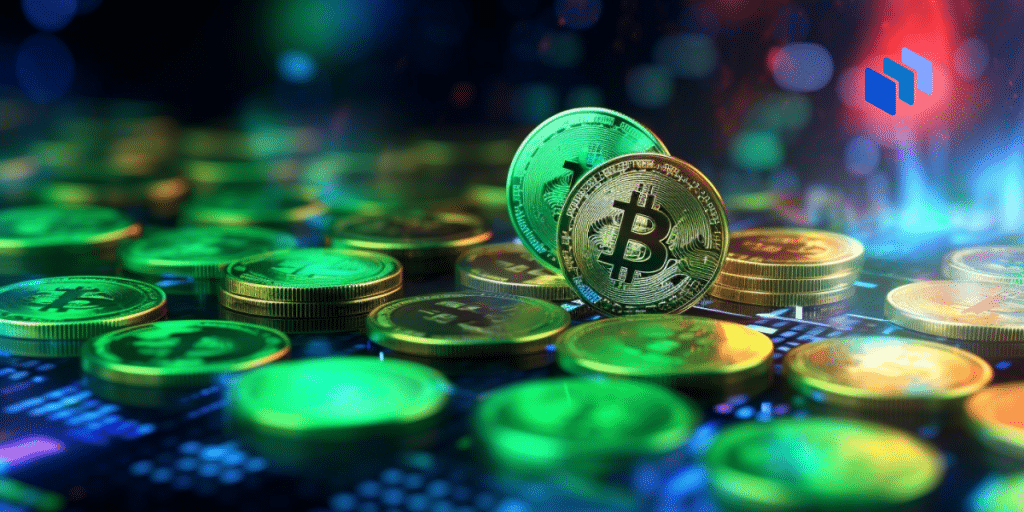In the ever-evolving landscape of digital finance, stablecoins have emerged as a pivotal bridge between traditional and cryptocurrency markets. As their influence grows, so does the imperative to establish a robust regulatory framework.
What are the ins of stablecoin regulation, and where could it be headed in the future?
FSB’s 10 Recommendations
In mid-July 2023, the Financial Stability Board (FSB) published its financial report on the regulation, supervision, and oversight of global stablecoin arrangements.
A total of 10 recommendations were endorsed by the member countries of G20. The FSB’s report reads: “The High-level Recommendations seek to promote consistent and effective regulation, supervision, and oversight of GSCs across jurisdictions to address the potential financial stability risks posed by GSCs, both at the domestic and international level, while supporting responsible innovation and providing sufficient flexibility for jurisdictions to implement domestic approaches.”
One of the key recommendations issued by the FSB is the requirement for stablecoin issuers to secure local licenses before operating in specific jurisdictions.
Explaining why it would be vital for governments to regulate stablecoins, Andrew Silverman, a tax analyst at Bloomberg Intelligence, said:
“Stablecoins, in my view, are not significantly different from derivatives, and governments have regulated derivatives for as long as they have existed. Allowing a financial instrument to go unregulated gives people and companies the ability to circumvent the rules simply by using a contract to stand in for an asset, and that opens up opportunities for abuse.”
Silverman added that the introduction of local licenses would allow governments to have broader control over which stablecoin issuers are operating in their jurisdiction. This could also allow governments to periodically obtain information from licensees, which could be the best “disinfectant” to avoid any regulatory or legal issues.
“Countries can also use licensing to keep the holders of licenses current on applicable laws and regulations, both in terms of maintaining current contact information with licensees and requiring acknowledgment of the current set of rules when a licensee renews their license,” Silverman noted.
Singapore, the First Country to Issue Stablecoin Regulation
On 15 August 2023, Singapore’s financial regulator was the first in the world to announce that it had finalized a set of rules on stablecoin regulation.
According to Anndy Lian, the author of NFT: From Zero to Hero, such a move has helped shape Singapore’s reputation as a “global hotspot for cryptocurrencies.” The introduced regulations highlight a number of requirements that include:
- The reserves supporting stablecoins need to consist of low-risk and easily tradable assets, and their value must always be equal to or greater than the circulating value of the stablecoin.
- In case of a redemption request, stablecoin issuers are required to reimburse holders with the nominal value of the digital currency within five business days.
- Issuers are also obligated to furnish users with suitable information, which encompasses audit outcomes of reserves, among other details.
Lian explains, however, that even though introduced, the regulatory framework surrounding stablecoins “remains intricating and swiftly changing.”
“Different governing bodies, whether at the federal or state level, wield varying degrees of jurisdiction over transactions, contingent on the asset’s structure and the specific circumstances surrounding it. In light of this context, Singapore’s decision to finalize regulations for stablecoins holds tremendous significance.
“This step addresses the pertinent regulatory obstacles and boosts the advancement of stablecoins as a reputable medium of exchange within the digital asset ecosystem,” Linn added.
Stablecoin Regulation Going Global
The attempts of several major companies to launch their own stablecoins were previously met with some opposition from governing bodies. At the start of August 2023, PayPal announced the release of its own US-dollar pegged stablecoin – PayPal USD (PUSD). The stablecoin was launched in collaboration with Paxos Trust.
Since both companies are unregulated, meaning they are not examined by a federal banking agency which is why governing bodies are starting to turn towards regulating stablecoins.
But with cryptocurrencies being accessible on a global scale, how can stablecoin regulation be reached?
Bloomberg Intelligence’s Silverman noted that if governing bodies work together, they could communicate a single message. He added that the United States often holds major influence over other countries’ financial decisions, especially in the industry of decentralized finance (DeFi).
“Having an impact on US law-making indirectly influences other countries’ rule adoption. I would note, however, that consistent stablecoin regulation is not necessarily the ideal for all. Companies and individuals that can arbitrage differences in countries’ stablecoin regulation could benefit from those distinctions.”
Lian added that Singapore’s stablecoin regulations could “potentially become a template for other nations grappling with their own regulatory frameworks.”
“Given Singapore’s standing as a meticulously overseen financial hub, its method of handling stablecoin regulations might emerge as a beacon for countries seeking to establish their own guidelines. Nevertheless, it is essential to acknowledge the swiftly evolving and intricate nature of the regulatory environment surrounding digital currencies.”
Can Stablecoin Regulation Prevent Another Market Meltdown?
Stablecoins are unique due to their ability to keep a 1:1 peg with the asset they are paired with, oftentimes the US dollar. However, on 9 May 2022, stablecoins made headlines when one of the biggest coins in the category – terra USD (UST), broke its peg from the US dollar.
UST’s collapse had led to major losses in the cryptocurrency industry, with many investors losing trust in stablecoins, fearing another collapse may be inevitable.
Silverman explained that by regulating stablecoins and essentially excluding speculative and volatile assets from supporting stablecoins, the assets could become “safer investments, or at least it will allow them to be viewed as safer investments.”
“I think the sentiment is good, but it could actually have the opposite effect. People viewed money market funds and collateralized debt obligations (CDOs) as entirely safe before the financial crisis when that didn’t turn out to actually be the case. Perhaps, speculative and volatile assets will, in fact, be successfully barred from being included in stablecoins. Perhaps not.”
He added: “A safe asset can always quickly become volatile under the right circumstances. Giving people the impression that a financial instrument is entirely safe when it’s almost certainly never possible to guarantee safety is not ideal from a policy perspective.”
Lian suggested that regulation ensuring that the reserves supporting stablecoins focus on low-risk and highly liquid assets could function as “a safeguard, tethering the stablecoin’s value to assets that are less prone to drastic value wings and can be readily transformed into cash when necessary.”
The Bottom Line
Stablecoins have represented a significant milestone in the cryptocurrency industry by attempting to offer stability and versatility in an otherwise volatile industry.
Silverman noted that all regulations are intended to offer protection without doing much harm to the assets being regulated, however, every regulation has the potential to weigh in favor of companies or individuals.
“The impact of regulations and their interpretation also changes over time, so what is beneficial to companies today could be better for individuals in the future. We will see how things shake out. If a regulation is truly harmful it tends to be struck down in court or over-written by statute. There are checks and balances. The downside, of course, is that everyone has to put up with a subpar regulation for some time until it is changed.”










